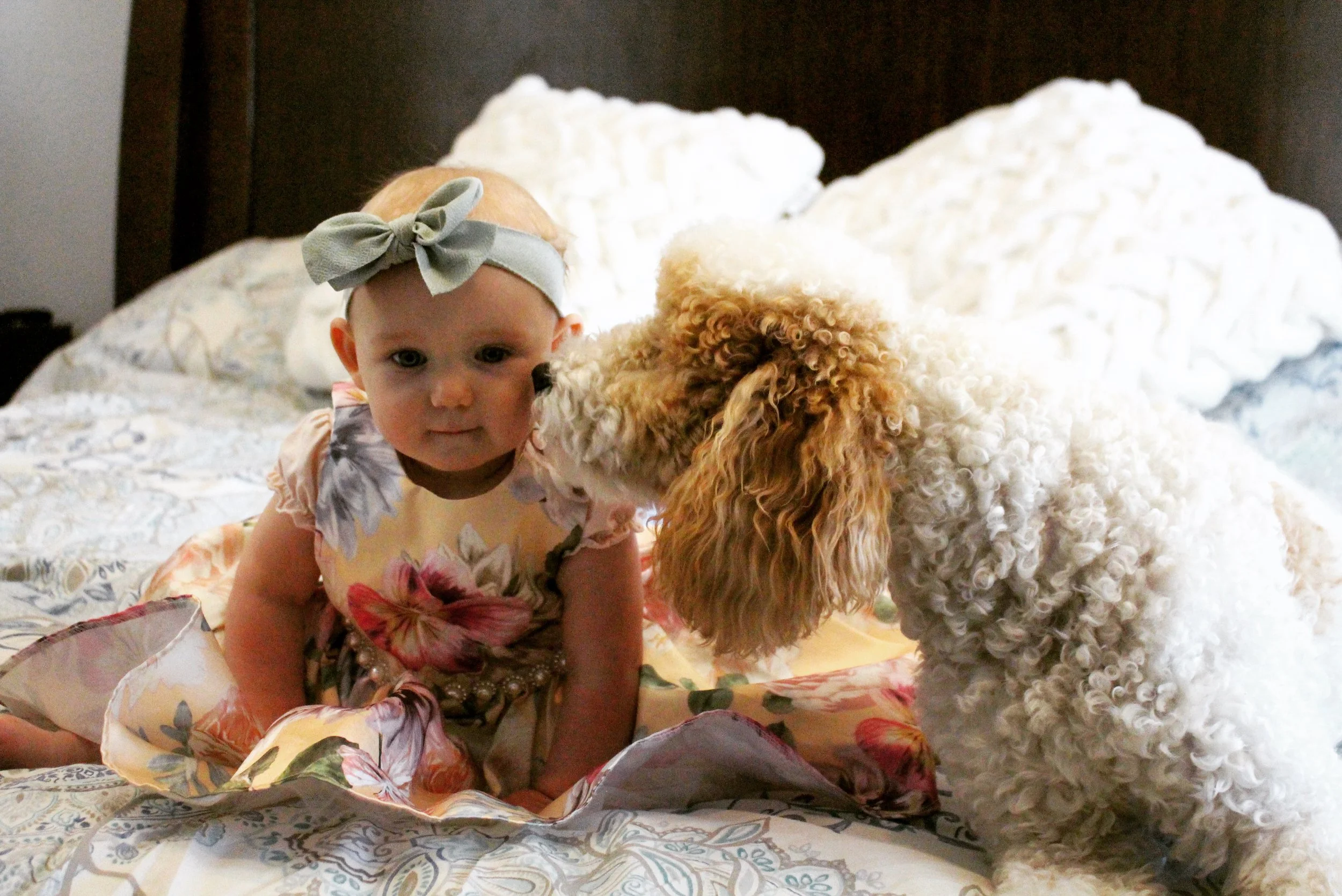Our Perfect Puppy Program
Just the right
STRESS and STRUGGLE…
Just the right amount,
at just the right TIME.
In short, we follow puppy culture protocol. If you are not familiar with puppy culture it is a complete training program for puppies. There are over 50 lessons that start from the day they are whelped and prepare them for a confident successful life. It is scientifically proven to greatly improve outcomes for puppies! Some of the highlights are; early neurological stimulation adopted from Breeding Better Dogs, manning, socialization, aggression prevention, overcoming fears, problem solving, potty directing, potty training, crate training, leash walking. The key is adding just the right amount, of just the right stress, at just the right time. Did you know that exposing a puppy to loud, big, scary foreign objects, like the vacuum cleaner or hair clippers at 3-4 weeks can help them be comfortable with these objects as older dogs; whereas introducing them to the same objects at 5-6 weeks can have the opposite effect and cause them to always be weary of those same objects.
Puppy culture is designed to be universally related to all puppies, however, there are some very important training exercises specific to poodles, like groom training that are not included in the puppy culture protocol. We are labeling this modified puppy culture program as our Perfect Puppy Program. Our goal is to have meaningful interactions with each puppy, each day. Exposing them to over 100 new sights, sounds, smells, textures… anything that will help them become more confident, healthy, happy puppies. Listed below are some of the important events for each puppy.
-
Whelping day!
-
Puppies are taken to the vet, officially weighed, and health checked by the vet. At this time their dewclaws are removed and their tails are docked to a long show length. (I personally feel that tails are important to the dog or they wouldn’t have them. However, tail docking is part of the breed standard for Standard Poodles. We instruct the vet to measure each dog’s tail carefully and mark two-thirds of the tail’s length and three-fourths of the tail’s length and cut in the middle of those. The goal is to have the length of the tail reach the same height as the top of the dog's head as an adult. Our vet then pulls the skin over the new end of the tail and puts a stitch or two. Puppies recover very quickly.) We aim to have this visit done as soon as possible so as to not interfere with ENS (https://breedingbetterdogs.com/article/early-neurological-stimulation).
-
Early neurological stimulation.
Tactical stimulation (between toes)
Head held erect
Head pointed down
Supine position
Thermal stimulation
-
Puppies are dewormed and provided safeguard once a day for 5 days. Additionally, the puppies receive pyrantel pamoate once a day for 3 days. This process is repeated every two weeks until the puppy goes to their new home.
-
Eyes are open, and puppies startle when they hear sound.
-
Puppies are started on liquid whole milk in addition to nursing.
-
Puppies are introduced to purée meats with their whole milk, while continuing to nurse.
-
Starting day twenty-one, each puppies’ nails are trimmed weekly. They are exposed to new sights, sounds, toys, tarps, blenders… really everything! Each puppy is taken out individually for short periods of time.
-
Puppies are introduced to the wood pellet litter box potty training.
-
New home is set up, a larger area to have more room to play. They are given a series of challenges to overcome. First being to get from their large playroom to the outside. Starting at 4 weeks we transition the puppies to going to the bathroom outside during the day. We set up obstacle courses to their food to introduce problem solving and overcoming frustration. Puppies start spending time with the other animals in the home. We introduce the puppy clicker. We start manding (https://coexistcaninecoaching.com/2016/10/24/manding-explained-by-jane-killion-from-puppy-culture/) exercises. Focusing on 2-6 min power training sessions with each puppy, each day.
-
First vaccine. Our puppies are given Neopar, a modified live virus vaccination, administered by us at 5 weeks old. As well as Safe-guard deworming. Nails trimmed.
-
First grooming, clean feet, face and potty path, introduction to water.
-
Dial back on new sights and sounds. This is the start of the fear response stage. We introduce more challenging exercises and increased our focus on their feeding schedule and potty training. Start kennel training.
-
NeoVac Vaccination.
-
Puppy party, neighbors, friends and family come to meet the puppies and assess each puppy’s temperament. Puppies start leash training. During this period of time we will do picks and assign puppies to those who have placed a deposit.
-
NoPar puppy vaccination
-
Start to introduce simple commands such as come, sit, and shake, continue leash, crate, and potty training.
-
Puppy will visit the vet and have a well check done. As well as a vet administered a typical 5-way vaccination.

